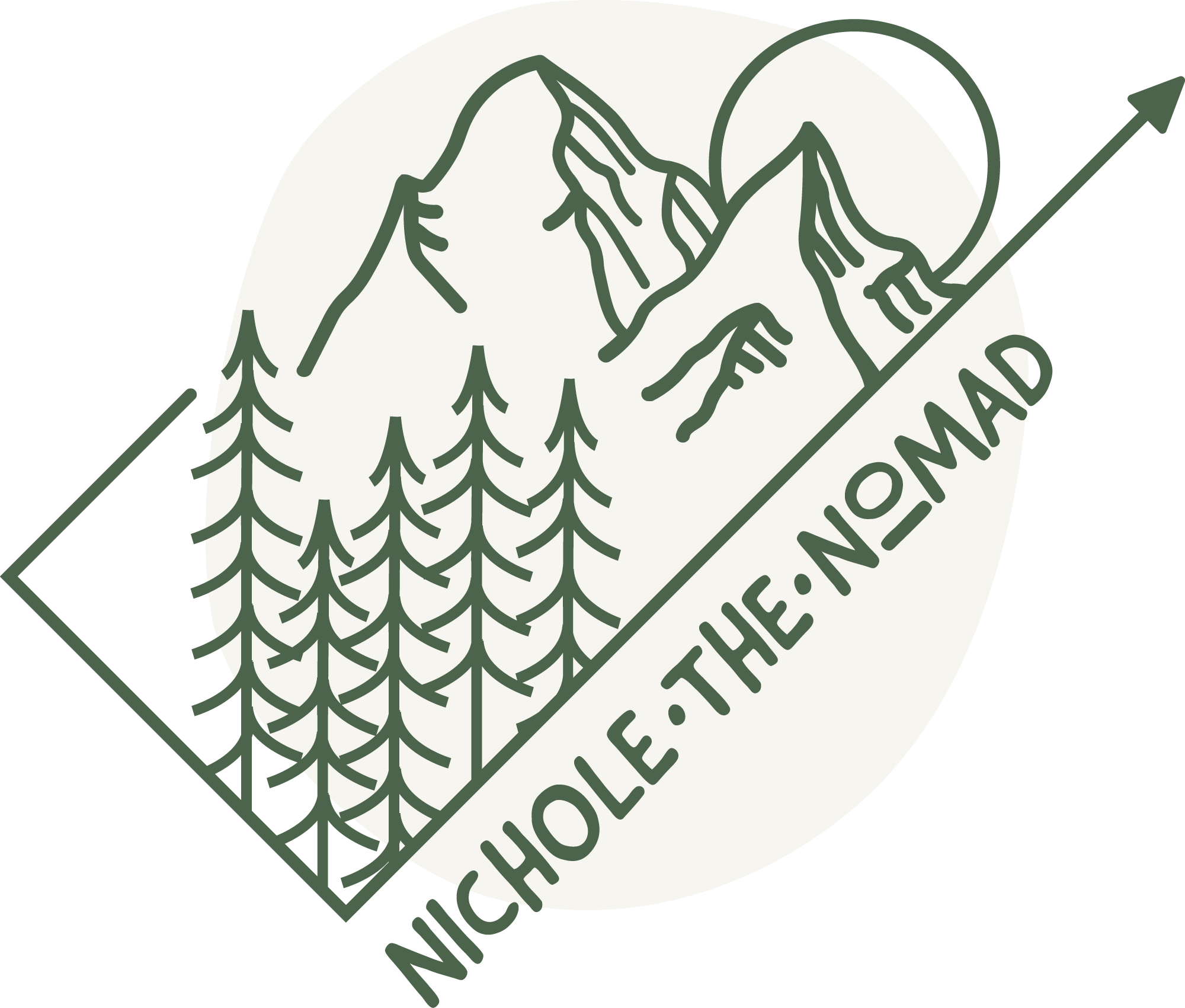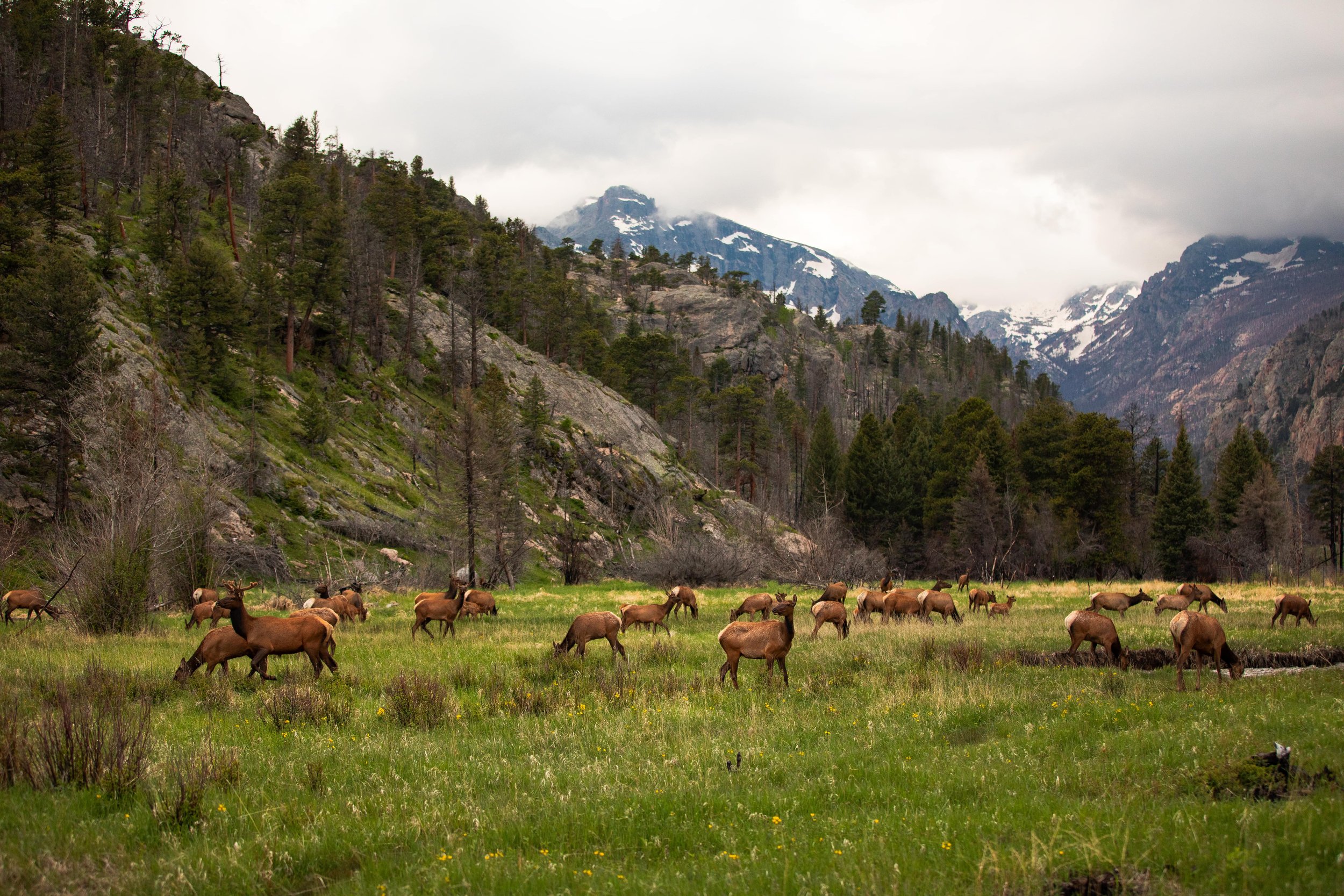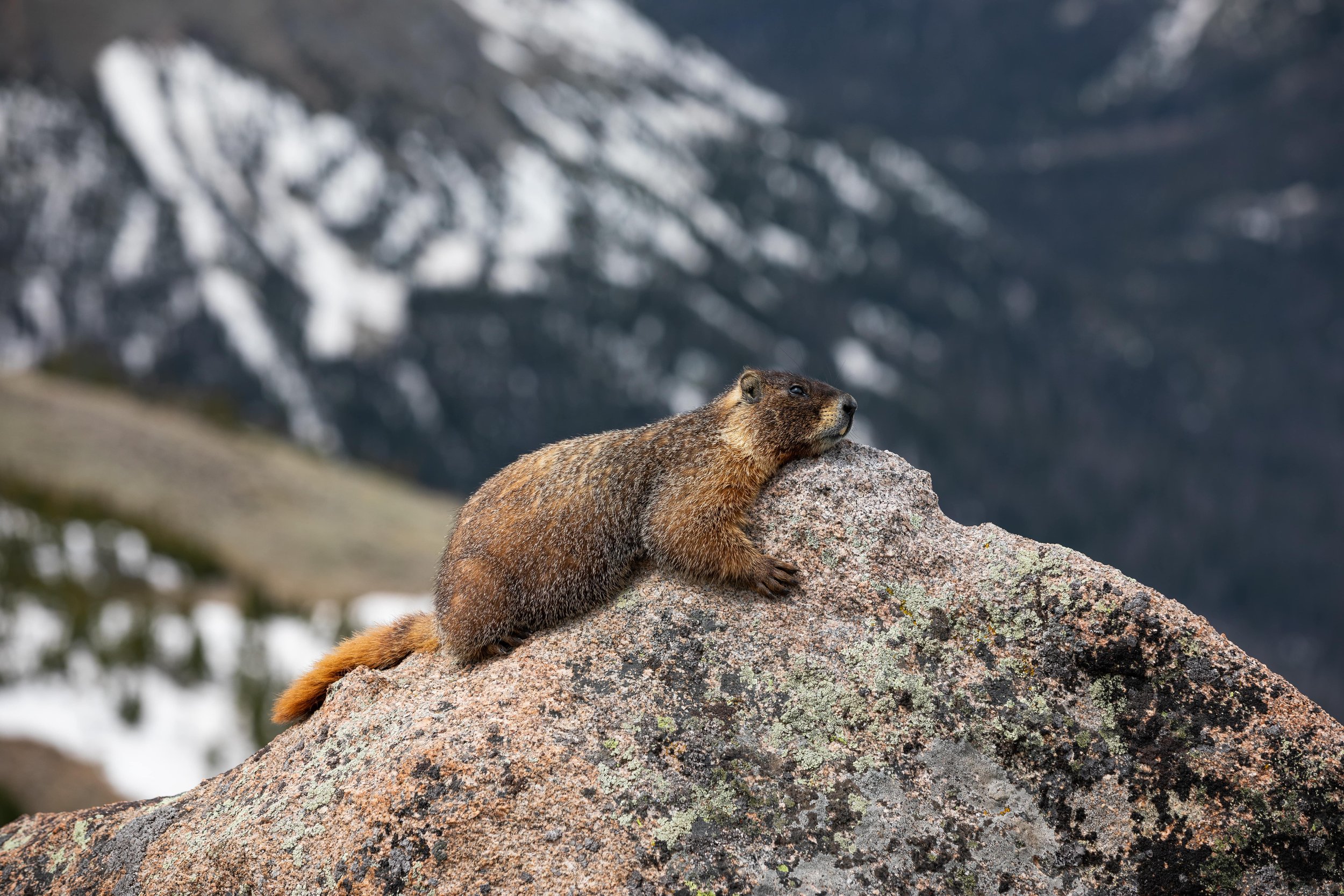10 Best Places to See Wildlife in Rocky Mountain National Park
Although Rocky Mountain National Park is known for its snow-capped mountains and beautiful alpine lakes, it offers incredible opportunities to see wildlife. The best part is you do not have to look too far to see the animals in Rocky Mountain National Park. We saw so much wildlife just by driving through the park.
Although you have the opportunity to see animals anywhere in the park, there are a few places that give you the best chance. This guide has everything you need to know about the best places to see wildlife in Rocky Mountain National Park!
Disclaimer: This post contains affiliate links. If you click through and make a purchase, my blog may receive a commission at no additional cost to you.
Types of Wildlife in Rocky Mountain National Park
There is so much wildlife throughout Rocky Mountain National Park, and some animals are more active during certain seasons. The National Park Service has wonderful resources on everything you need to know about the wildlife in the park.
Below is a list of the larger animals you are likely to see in Rocky Mountain National Park. You will notice that I do not mention bears. That is because there are only about 20-35 black bears in the park, and it is unlikely you will see one.
Elk
Moose
Mule deer
Bighorn sheep
Marmot
Coyote
Tips to See Wildlife in Rocky Mountain National Park
Get your timed entry permit in advance. Rocky Mountain National Park has a timed entry permit system for the summer and fall, and the slots fill up quickly. I highly recommend reserving yours as soon as they are released, especially if you want to visit Bear Lake Corridor. The Bear Lake Corridor time slots for peak season fill up the same day they are released because it is one of the most popular areas in the park. The national park service has the release schedule on its website to make it easy. If you do not have a timed entry slot, you can enter Bear Lake Corridor before 5 am or after 6 pm and in the other sections of Rocky Mountain National Park before 9 am or after 2 pm.
Look for wildlife in the early morning or late afternoon. The wildlife in Rocky Mountain National Park is more active near sunrise and sunset, so I recommend heading to the best places around that time. Although, you can see wildlife in Rocky Mountain National Park any time of the day!
Always keep your distance from the wildlife, and do not approach any animals. Make sure to stay at least 100 yards from wolves and bears and 50 yards from other animals. Keeping your distance ensures you, the wildlife, and their habitats are not harmed. Remember, you are in their home.
Do not feed the wildlife. Feeding wildlife is illegal, even birds and squirrels. If animals are fed, they can become dependent on people, their instincts can change, and they can become more comfortable around people, which puts them and people in danger.
Be quiet around wildlife, and do not startle them. When you are viewing wildlife, it is crucial to be quiet. You are viewing the wildlife in their home, so they should not be disturbed.
Never put yourself between an adult and their baby. Adults are very protective of their babies, so you should never put yourself between them.
Go on a guided wildlife tour. There are plenty of companies you can book a wildlife tour with, and an expert can help you see wildlife in Rocky Mountain National Park! Going on a tour saves you a lot of planning and finding locations to see wildlife.
The Best Places to See Wildlife in Rocky Mountain National Park
One of the best things about Rocky Mountain National Park is you can see its wildlife pretty much anywhere in the park. As you drive around, you will have many opportunities to see wildlife, so make sure to keep your eyes open! If you want the best chance to see wildlife in Rocky Mountain National Park, the below spots are the best places.
Moraine Park
Moraine Park is one of the best areas to see wildlife in Rocky Mountain Park. This park is off Bear Lake Road just past the Beaver Meadows Entrance and requires the Park Access+ Permit to access. Although you are likely to see elk during any part of the day, we saw the most when we visited in the evening near sunset. We saw hundreds of elk just by driving down Fern Lake Road, and it was an incredible experience!
You can enjoy watching herds of elk roam around Moraine Park or hike along the few trails in the area. Two beautiful trails are Cub Lake and Fern Lake. Moraine Park also offers stunning views of the surrounding mountains, so you will not want to skip visiting this area!
Sheep Lakes
Sheep Lakes is a lesser-visited wildlife area in Rocky Mountain National Park but should not be skipped! The lakes are just past the Fall River Entrance and have spectacular views of Horseshoe Park.
As you can imagine, this area got its name from being home to bighorn sheep. We learned from a park ranger that the early afternoon is a great time to see the sheep. We did not have the opportunity to see any sheep, but we saw elk roaming around the lakes near sunset. The park ranger also told us that coyotes frequently visit Sheep Lakes.
Upper Beaver Meadows
Upper Beaver Meadows is a fantastic place to see wildlife roaming throughout the nearby fields and is another lesser-visited wildlife area in Rocky Mountain National Park. It also has stunning views of Longs Peak and the surrounding mountains.
We enjoyed driving through Upper Beaver Meadows in the morning as the sun rose because the views were stunning! We saw many elk and mule deer roaming the fields and enjoyed watching the herds in this peaceful part of the park. We learned that Upper Beaver Meadows is also a great place to see wild turkeys.
If you want to enjoy a hike in the area, you can follow the Upper Beaver Meadow Loop. The trail is a great way to take in stunning views and see the wildlife in their natural habitats.
Old Fall River Road
Old Fall River Road was our favorite place to see wildlife in Rocky Mountain National Park! Usually, the road opens in mid-July and closes in October. Only the first two miles of the road were open when we visited, but that is all we needed to enjoy the wildlife! If the entire road is open, you can enjoy a beautiful 9-mile, one-way scenic drive to the Alpine Visitor Center.
We visited Old Fall River Road during sunset on two nights and were blown away by how much wildlife we saw! The road was quiet because most of the road was closed, which allowed us to enjoy watching the wildlife in peace. We saw moose, mule deer, and elk along the sides of the road. They were not in herds but in smaller groups. It was amazing to be able to watch them from our car!
If you want to hike when you visit Old Fall River Road, a few favorites are Marmot Point Trail (easy/moderate), Ypsilon Lake Trail (strenuous), and Alluvial Fan Trail (easy). You will not want to miss exploring Old Fall River Road and its beautiful wildlife!
Bear Lake Road
Bear Lake Road is one of the most iconic places to visit in Rocky Mountain National Park because it is said to have some of the best hiking trails. Although many people only visit to explore its alpine lakes, it is a great place to see wildlife. Bear Lake Corridor is the most-visited area in the park and requires a Park Access+ Permit to access.
Once you are on Bear Lake Road, you have many opportunities to see wildlife along the side of the road. We visited just after sunrise and saw many elk as we drove through. The mountain views are breathtaking, so you will quickly fall in love with this beautiful area!
If you want to hike, the most popular trails are Bear Lake, Nymph Lake, Dream Lake, and Emerald Lake. I highly recommend hiking to all of them on a 3.8-mile trail because the views are stunning!
Sprague Lake
Another beautiful hike in the Bear Lake Corridor is Sprague Lake, which is one of the best places to see wildlife in Rocky Mountain National Park. It is common to see many birds along the trail and elk grazing near the lake. The hike around the lake is easy and perfect for all levels, allowing everyone to see the wildlife and the beautiful mountain views. It is a lesser-hiked trail, but it should be on every bucket list!
Kawuneeche Valley
Kawuneeche Valley is on the lesser-visited side of Rocky Mountain National Park near the Grand Lake Entrance. It has lush meadows with the Colorado River running along it, making it a great place to see wildlife.
Kawuneeche Valley is truly a wildlife paradise in the park, allowing you to see many different animals. The most common animals you see are elk and mule deer grazing in the meadows, but the valley is also home to moose, coyotes, and black bears. Kawuneeche Valley is also a great place to see many types of birds.
And the best part? You do not need to go far to see the wildlife because it is common to see wildlife from overlooks. Kawuneeche Valley is one of the most underrated places to see wildlife in Rocky Mountain National Park!
Holzwarth Meadow
Holzwarth Meadow is also on the western half of Rocky Mountain National Park and is often overlooked as a place to see wildlife. The trail to Holzwarth Meadow is 1.2 miles and starts on Trail Ridge Road past the Grand Lake Entrance.
The trail is one of those that is not about the destination but the journey. Although it brings you to a historic site, the real star of the hike is along the beginning of the trail as you walk through the meadows. The meadows are great places to see moose, elk, and coyotes, especially in the mornings. The trail through Holzwarth Meadow has benches to relax on and educational signs to learn about the area and wildlife.
If you visit the western half of Rocky Mountain National Park, Holzwarth Meadow is a must-see wildlife area!
Trail Ridge Road
Trail Ridge Road is the iconic 48-mile scenic drive in Rocky Mountain National Park, linking Estes Park to Grand Lake. Although it is known for its epic views of the mountains, it is a great place to see wildlife at any time during the day, especially along the trails. Many overlooks also offer opportunities to see wildlife grazing along the road.
We saw the most wildlife while we were hiking on Trail Ridge Road. We saw elk, mule deer, and marmots on almost every trail we explored, and it was incredible! Some marmots were fearless, getting close to the hiking trails. Although they are cute, it is crucial to remember that you should not try to touch or feed them. We also had some elk and mule deer cross the trails we were hiking. It is important to keep your distance and let them cross before continuing. We are in their home, and we have to respect that!
Estes Park
Estes Park is one of the best places to see wildlife near Rocky Mountain National Park, which surprised us! The town is incredibly busy because it is where everyone stays when they visit, and we assumed we would not see much wildlife near the downtown area. But we were proven wrong!
We saw a lot of wildlife as we drove around Estes Park, including herds of elk, mule deer, and moose. We stayed on the outskirts of Estes Park, so the wildlife was more active near our accommodations. When we drove back to our hotel at night, we saw elk crossing the nearby roads.
If you stay in Estes Park when you visit Rocky Mountain National Park, keep your eyes open! You are likely to see wildlife throughout the town.
If you want to see wildlife in Rocky Mountain National Park during your trip, this guide is the perfect place to start planning. It has everything you need to know about the best places to see wildlife in Rocky Mountain National Park!
Hey, I’m Nichole!
I am the creator behind Nichole the Nomad, the home of my explorations around the world, mountain hikes, and beautiful pictures taken along the way. I have a deep passion for capturing the world in a beautiful light and sharing my experiences.
I created this blog to share my travels, show how beautiful the world is, provide tips and tricks for traveling, and encourage you to explore. Whether you want to travel across the world or explore what’s in your backyard, I hope this blog inspires you to get outside and find your adventure!
Pin it for later!










